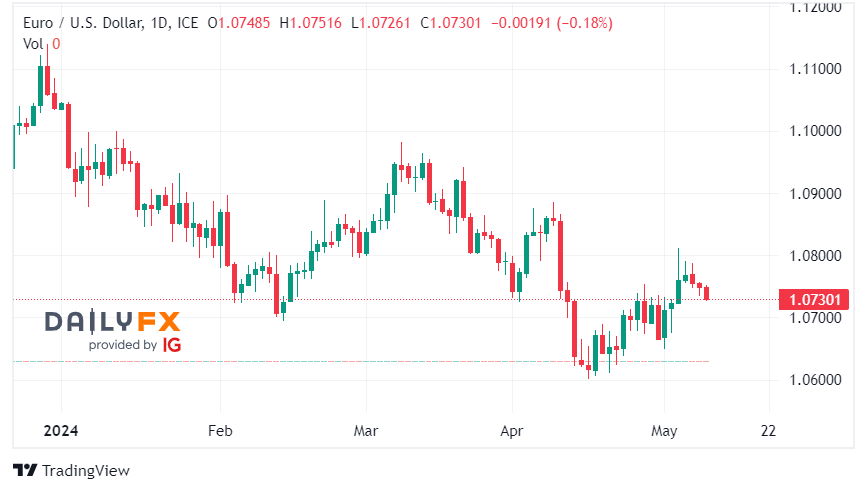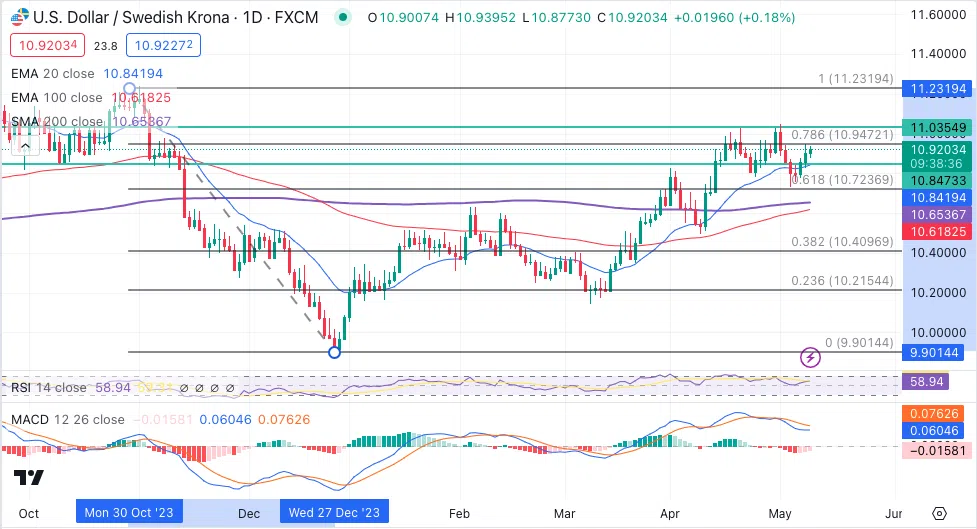-
Best Forex Brokers
Our top-rated Forex brokers
-
Brokers for Beginners
Start trading here
-
ECN Brokers
Trade with Direct Market Access
-
Forex Demo Accounts
Learn to trade with no risk
-
Lowest Spread Brokers
Raw spreads & low commissions
-
Islamic Account Brokers
Best accounts for Muslim traders
-
Market Maker Brokers
Fixed spreads & instant execution
-
MetaTrader 4 Brokers
Top MT4 brokers in Philippines
-
MetaTrader 5 Brokers
Top MT5 brokers in Philippines
-
cTrader Brokers
Top cTrader brokers in Philippines
-
All Trading Platforms
Find a platform that works for you
-
Copytrading Brokers
Copy professional traders
-
Forex Trading Apps
Trade on the go from your phone
While a member of the EU, Sweden has remained outside of the eurozone and retains control over its own currency (the krona) via the Sveriges Riksbank, the country’s central bank.
Yesterday, 8th May, the Riksbank became one of the first countries in Europe to lower its interest rate – from 4% to 3.75%. Erik Thedéen, the Riksbank’s governor, said: “We are convinced enough that inflation has come down, and has come down in a sustainable way.”
The Swedish move is especially important as this is the first time the Riksbank has lowered interest rates before the US Federal Reserve this century. It’s not the first European country to lower interest rates this year – with Hungary, the Czech Republic and Switzerland already making the move – but its ties to the wider EU make it a more valuable bellwether.
Piet Haines Christiansen, a strategist at Danske Bank, said: “The Riksbank is particularly interesting to watch in this episode as the structure of the Swedish economy is closely related to the wider European one and hence it acts more as a precursor [than Switzerland] for what may come from the ECB.”
While the decision won’t have much effect outside of Sweden, where the krona is one of the worst-performing major currencies in 2024, it does signal the start of a long-expected but almost unprecedented divergence in rates between Europe and the United States.
Despite a recovery in February and March, the story of the EUR/USD in 2024 has been one-way traffic.
The strength and resilience of the US economy have been the main drivers of the EUR’s push lower. The Fed has repeatedly warned that inflationary pressures remain too hot to consider any rate cut. Markets have now jettisoned any hope of the Fed cutting rates in the summer, and the odds of a September rate cut are now 50%. Many analysts are not expecting a rate cut before the elections in November. While the US economy has shown some signs of slowing, with recent jobs data and the increasing levels of personal debt causing concern, the overall picture remains strong.
The eurozone and the wider European region are a very different story. High interest rates across the economic block are punishing personal and corporate finances, with Germany suffering particularly badly. The pressure on the European Central Bank to lower interest rates at its next meeting in June is immense.
If the ECB lowers interest rates in June, we will be in uncharted waters. The divergence in interest rates between the EU and the USA will probably trigger further depreciation of the EUR against the USD, increasing import costs and potentially fuelling further inflation. Something I am sure the ECB will be keeping a very close eye on.
With no major data to consider until mid-May, when the US CPI figures are released, the EUR will remain under pressure in the short term. With no serious expectations of a Fed rate cut, the medium-term outlook is similar.
The good news is the expectations of divergence in rates have brought renewed volatility and volume to the Forex markets. Saxo Bank recently published its statistics for April, showing that Forex trading volume grew by 16.6% month-over-month. Granted, this comes after March had the lowest monthly trading volume in 8 years, but as this divergence becomes a reality over the summer, I expect volumes – and volatility – to increase substantially.
On the Technical Front
Having been in an uptrend since 14 March 2024 due to the dollar’s relative strength, the USD/SEK hit a fresh yearly high of 11.04 on Wednesday, 1 May. Having dipped last week, the pair has since resumed its upward trend and continued higher following the Riksbank announcement. Hovering at around 10.94 (the 78.6% Fibonacci level of the November – December 2023 downtrend), the pair maintains a position above all three moving averages (20 EMA, 100-EMA, and 200-EMA), illustrating a solid long-term uptrend.
The RSI, with a value of 58, also confirms an uptrend in the short term, while the MACD shows progressively decreasing red bars, showing a slowdown in negative momentum in favour of the bulls.
The USD/SEK may experience short-term resistance at the Fibonacci 78.6% level, corresponding with 10.94, and after that at the 11.00 level – the May 2024 high.
Should the bears gain ground, immediate support may be experienced at the10.91 level
Stay updated
This form has double opt in enabled. You will need to confirm your email address before being added to the list.

































